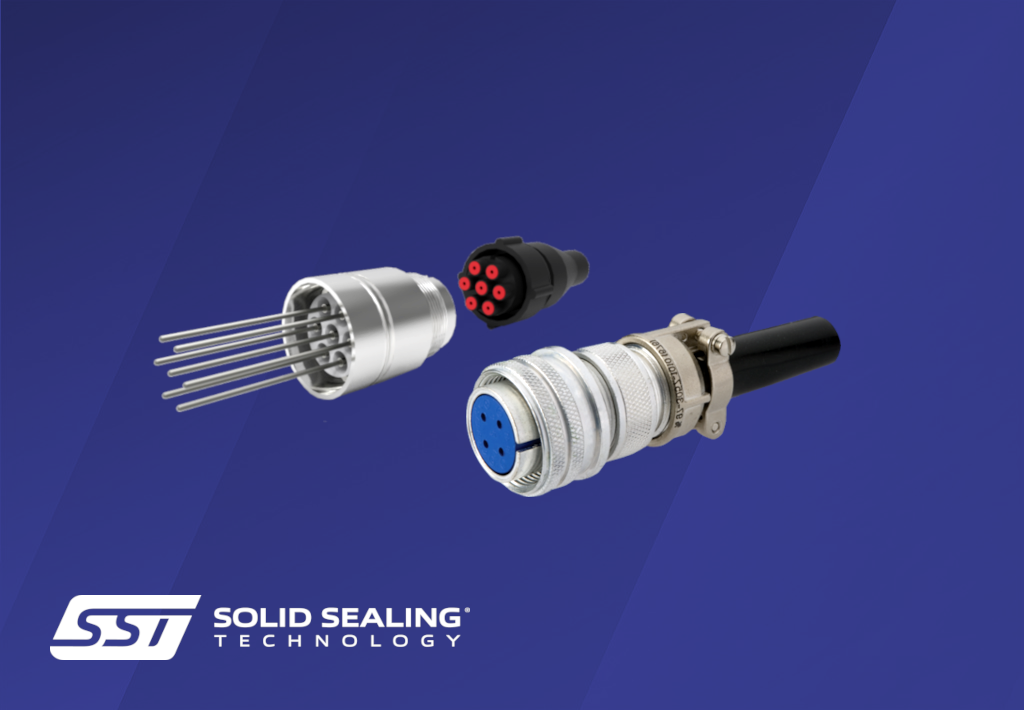Connecting to a Feedthrough
 Getting electrical connections into and out of your sealed environment can be a challenge, and installing a feedthrough is only part of the battle. Once it is in place, you still need to connect to it! This is often more difficult than it appears at first glance. Luckily, there are many options, and SST will help you make the right choice to fit your system.
Getting electrical connections into and out of your sealed environment can be a challenge, and installing a feedthrough is only part of the battle. Once it is in place, you still need to connect to it! This is often more difficult than it appears at first glance. Luckily, there are many options, and SST will help you make the right choice to fit your system.
One of the first considerations to make is how permanent the connection needs to be. Is the installation meant to be put in place and never removed, or will the part need to be connected and disconnected regularly?
For truly permanent connections, soldering, spot welding, or crimping with splices are often the best choices. Conductor material and physical access will play roles in choosing one of these options. Certain materials like stainless steel are not easily soldered to and will require added conductor plating. Tight pin patterns or tight spaces for installation often prevent access with a crimping tool or spot welder. SST will assist in reviewing the installation environment to identify the best solution.
When these are not an option, or for semi-permanent connections, physical modes of engagement are best. Plugs with screws, plugs with bayonets, or individual barrel contacts provide a physical interface that will remain reliably connected while still allowing you to disconnect when needed.
- SST offers standard air-side plugs and specialized vacuum-compatible plugs made with low outgassing materials like PEEK (Polyether Ether Ketone). Once mated to the feedthrough, these plugs can be left with confidence that they will remain engaged.
- SST designs many of our vacuum feedthroughs to be compatible with commercially-available electrical standards like our MIL-DTL-26482, MIL-DTL-5015, and Sub-D (MIL-DTL-24308) patterns.
- Plugs also offer the added benefit of insulated conductors. High-voltage electrical connections like our power boots can be fully insulated to avoid inadvertent contact with other conductive materials.
- Screw-down barrel contacts offer a similar degree of reliability, albeit without any added insulation. They are both a cost and space-effective solution for making reliable connections both in and out of vacuum.
- While some plug materials will limit the operating temperature of a system, and some have simply too large a footprint, SST will ensure these restrictions are considered for seamless installation.
For non-permanent connections where a plug is not application-compatible or does not exist, push-on contacts offer a customizable approach. SST sources mil spec contacts or designs customized push-on contacts to match our standard conductor diameters. These contacts are crimped or soldered to the wiring of your equipment and mated/unmated to vacuum feedthroughs with ease. If application restrictions rule out other options, contacts are a good semi-permanent solution. When paired with a heat shrink, contacts are reliably secured in place and physically prevent unintended contact to any exposed electrical components.
SST often designs application-specific custom plug housings to contain multiple contacts, so they can also be physically engaged with screw connections, or to allow simultaneous connections and disconnections.
Check out our accessories page to see a full range of products, or view the related accessories for each part to explore available connection options for your vacuum feedthroughs. If you have any questions, please contact us here.